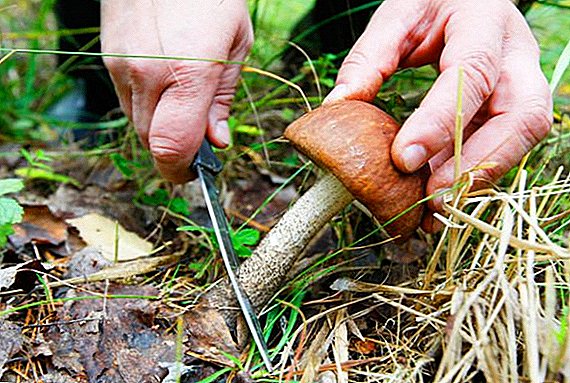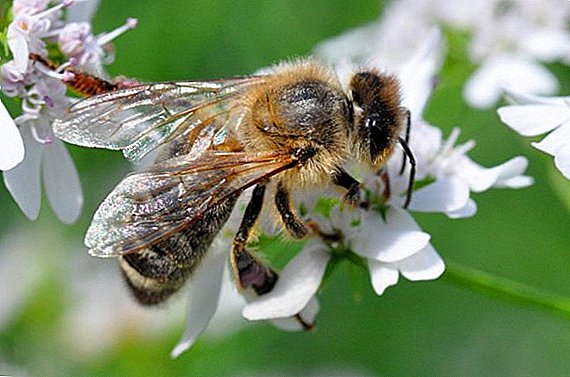 Endowed with the same instincts, like his wild relatives, bought by you as a pet, the rabbit is unlikely to immediately begin to caress you, calmly sit on his hands and behave naturally. The animal takes time to get used to, as well as your attention, patience and affectionate attitude.
Endowed with the same instincts, like his wild relatives, bought by you as a pet, the rabbit is unlikely to immediately begin to caress you, calmly sit on his hands and behave naturally. The animal takes time to get used to, as well as your attention, patience and affectionate attitude.
Breeds that are easy to tame
It is not a big problem to teach not only the decorative, but also the usual wild rabbit to the hands, the difference is that in the second case you will have to tinker a little more.
Did you know? Despite the fact that rabbits belong to lagomorphs (and by no means rodents), unlike their relatives, they are social animals and in natural conditions live collectively, in herds.
There are specially bred breeds, the domestication of which does not constitute special work and passes easily and simply with a reasonable approach of the owners:
- miniature lop-eared - outwardly unusually sweet and attractive, has funny hanging ears, kind and lively, inquisitive and playful, perfectly trainable, suitable as a pet for a child;
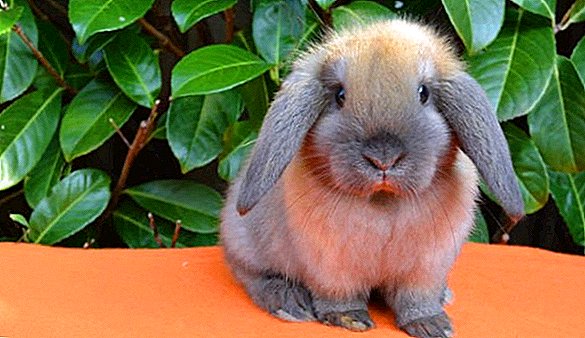
- Dutch - the most common breed in the world, the animal is obedient and calm, well tamed, likes to be with people, is not too susceptible to stress, appreciates a kind attitude;
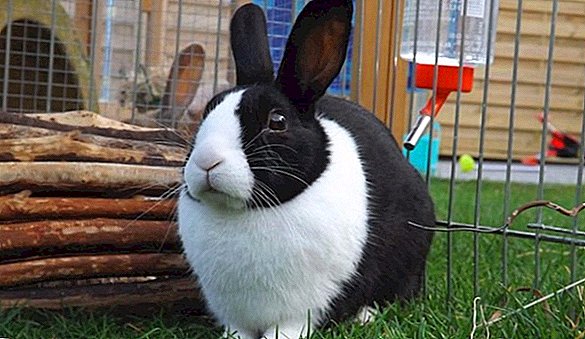
- harlequin - “Frenchman”, painted motley, like the comedic character of the same name, is two-and three-colored, with a calm and even temper, a gentle and kind animal.
Did you know? A female rabbit, having a forked uterus, can at the same time harbor two litters from different fathers.
The rabbit is well trained and trained to the rules of the house, in particular, to the tray;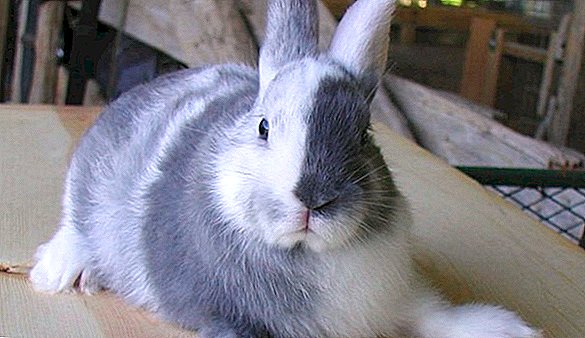
- chinchilla - short-haired furry animal of gray color, incredibly tender and bringing tactile pleasure.
Check out the most popular breeds of ornamental rabbits, and also find out how you can feed decorative animals and what types of diseases they have.
This rabbit interacts well with children and pets, if any, intelligent and clever, is happy to participate in the proposed games;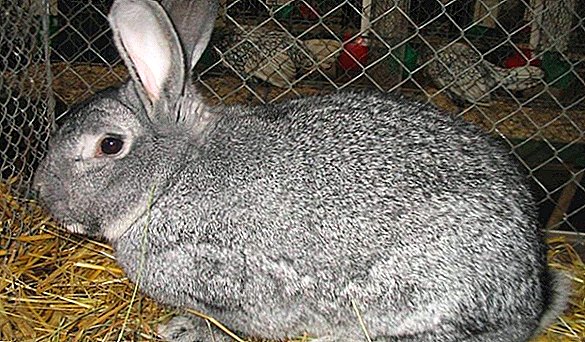
- Himalayan - a rabbit with a phlegmatic character, is gentle and moderately playful, is not inclined to display aggression, prefers the society of people, is well accustomed to the toilet tray and other rules of living together.
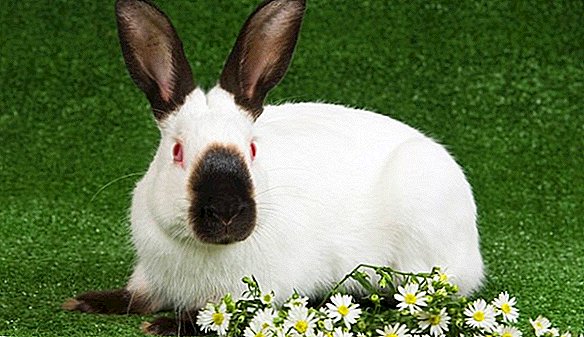
Important! When choosing a pet for your child in order to accustom him to responsibility, care for a living creature and interaction with nature, remember that an adult is responsible for the pet, its well-being and safety. You must teach your child how to handle and care for your pet and monitor their implementation.
Factors Affecting the Taming Process
The procedure for taming a rabbit is influenced by several factors:
- age;
- animal health;
- its genotype (heredity).
Age
If possible, make sure that the pet you are purchasing is as young as possible - this will provide you with the easiest upbringing and taming.  Most often the rabbit, not too gentle at an early age, grows up, becomes attached to its owners, becomes gentle and tame, seeks to get as much attention of a person as possible, approaches and caresses.
Most often the rabbit, not too gentle at an early age, grows up, becomes attached to its owners, becomes gentle and tame, seeks to get as much attention of a person as possible, approaches and caresses.
Did you know? In the old days, rabbits were launched into the desert uninhabited islands so that people who were shipwrecked and found salvation there had enough food.
Health
Unhealthy rabbit reluctantly goes to the contact, trying to avoid it, cowardly. If you suspect your pet is unwell, examine its ears and eyes for inflammation and unhealthy discharge. The condition of the coat can also indicate a disease: in a healthy form, it is clean, not felted, not crumpled, uniform.
Genetics
If you decide to choose a purebred animal in the nursery, it is useful to look at his parents and their behavior. If your animal's mom and dad are friendly, affectionate and accustomed to their hands, the kid has every chance to adopt it. 
How to teach a rabbit to the hands
Before taking the rabbit in his arms, he should be taught to him, taught not to be afraid and not perceived as a threat.
How to take on your hands
The common opinion that rabbits are carried by the ears is, to put it mildly, mistaken. This method of transportation is quite painful, moreover, due to this treatment, the ear membranes and muscle tissue can be damaged. Take the rabbit, clasping it with one hand on the rib cage under the front paws and holding the other for the back and croup. Holding down, you can press it to your body.
Important! Rabbit in nature lives in the mink. When you pick him up, he rises above the ground, and instinct tells him that the beast has grabbed a predator. He is frightened and resists. That is why it is necessary to gradually accustom to the possibility of being picked up by a rabbit. Although some individuals do not get used to such treatment all their lives. However, the majority gets used and ceases to react nervously.
Taming process
Rabbits for the most part are tamed quite easily, with a reasonable approach it does not take much time.  Adaptation
Adaptation
In the first days of your stay in your home, do not frighten the animal with stormy hugs, it is best to leave it alone in a cage where the rabbit can take shelter in the sleeping compartment, and talk to him in a gentle calm voice so that he gets used to his sound.
Did you know? The eyesight of the rabbits is very interesting: without turning their heads, the animals can see what is happening behind them.
If you dare to look out of the shelter, you can try to treat you with a tidbit of a carrot or a bullseye, however, so that he does not have the opportunity to bite your hand. Just do not make sudden movements, so as not to scare the fluffy. He takes time to get used to the smell of the owner and his home.
If you get a bold and sociable animal, after a short time showing readiness for contact, you can gently stroke it, keeping your hands away from its nose. Watch his body language: if the animal became scared, he was tired and keen to stop communicating - do not force him.  He should be able to independently initiate communication with the person. It is very important to talk with the baby in a gentle, calm voice, calling him by name with different intonations.
He should be able to independently initiate communication with the person. It is very important to talk with the baby in a gentle, calm voice, calling him by name with different intonations.
Important! In the early days, it is better to place a cage with an eared pet not on the floor, but higher, for example, on a table. This is necessary in order not to "hang" over the rabbit, which he may take as a threat. More safely he will feel himself being at the level of your face.Physical interaction
By physical contact with the animal instincts of the wild beast should be taught gradually, starting with your hands.
In order to convince the pet that your hands are safe, after he gets used to the house and voice, you should:
- clean hand without odors gently shove in a cage, without disturbing its inhabitants;
- to attract his attention not by movement, all the more sharp, but by his voice;
- allow the animal to get acquainted with the hand: lick or sniff, maybe even a little bite;
- give a rabbit treat: it will help build trust between you.
Only after overcoming the barrier of distrust can one begin to gently touch his wool, lightly stroke the back and sides. 
After the successful completion of this stage, the pet is released for a walk around the apartment to explore the territory.
Important! It is better to exclude sharp perfume smells, accustoming a rabbit to itself. His instincts suggest that you need to be as far as possible from the unpleasant chemical smell, because it can be a source of danger.
Surveillance in the vicinity
Releasing the rabbit for a walk, it is better to sit on the floor and watch him from such a position so as not to frighten the little creature with its size. After reviewing the environment, the pet is likely to express a desire to explore you, if all previous actions were carried out correctly.
When he comes closer, you can gently, smooth slow motion to stroke him on the fur. Do not forget that you need to speak with a rabbit in a tender voice, to which he should have already become accustomed at this stage of domestication.
After the fear of your hand is overcome, you can try to pick it up without lifting it high, so that the predator doesn’t imitate the imitation.  This is done in this way:
This is done in this way:
- an open palm is placed on the floor, a delicacy-bait is placed in it;
Important! A rabbit in a cage can only be stroked with a finger on the forehead, another kind of stroking - just outside the cage. It is better not to touch the nose at all - this is the most vulnerable part of the animal.
- after the animal climbs on the palm, it is stroked on the back with a slight movement and, holding it with this hand, slightly lifts on the lower palm;
- repeat the procedure several times, giving the eared mouse the opportunity to get used to this procedure;
- on the next “walk” you can take it a little bit more boldly and hold it up.
In doing so, you gradually accustom the child to your hands, and he will no longer be afraid to be there. Do not shout at a rabbit ever, especially if it behaves aggressively: a cry provokes fear, therefore - aggression. The rabbit is stroked on the back and sides only in the direction of growth of the wool.
These animals love when they are stroked on the forehead and scratch their heads between the ears and behind them. They also adore, when they slightly massage the back, slightly squeezing the skin on it, as if crumpled. Fluffies freeze from such affectionate treatment and get pleasure from it.
Video: how to accustom the rabbit to the hands
However, it is undesirable to remove the pet from the cage in order to stroke or caress it - such treatment can be taken as a manifestation of aggression and frighten him.
Important! When you still have to perform some manipulations with an animal against his will, for example, combing or cutting claws, try to calm him down with your gentle voice as much as possible before and during the procedure. Of course, the animal should get used to the voice of the owner by this time and react positively to it.
Why does the rabbit show aggression
Most of the rabbits are sweet and friendly, but there are individuals that show signs of aggression: they bite you while feeding, attack your legs and strive to bite them. Such bites are quite painful, and even rabbits can be kicked and scratched. However, these defects in education can and should be corrected.
Individuals with high intelligence are usually prone to aggression; such an animal can become a worthy opponent in redirecting aggression to a peaceful course. If successful, such pets become loyal, energetic and enthusiastic. 
Re-educating such a brawler, always remember that:
- nature has not laid aggression in rabbits, and the deviant behavior of the animal, most likely, is due to external factors;
- your animal does not hate you, it is basically not capable of such emotions, its aggressive behavior is most likely dictated by fear, and only an attentive person can get to the bottom of the causes and eradicate them;
- It is unacceptable to show aggression towards the rabbit, especially in response - this will cause even more unfriendly behavior caused by fear, and certainly will not add respect and love for you from the animal.
Important! Fear can lead to more sad consequences than the loss of pet’s trust. Sudden fright can cause a heart attack and death to the animal.
The reasons
Aggressive behavior can be caused by understandable reasons:
- fear of pain and sudden fright, especially if the animal has been mistreated before, and he is not used to being affectionately treated, but has a habit of defending himself;
- puberty and sexual arousal are manifested in circular motions at the feet, bites behind them, and jumps;
- during pregnancy, especially false, the female is prone to show aggression due to the changing hormonal background;
- for the same reason, an unfaithful female, protecting her offspring, may be unfriendly.

How to wean bite
If the nipper is matured sexually and is in a state of excitement, there are two ways to solve the problem: to give a stimulus a way out, pick up a pair of animal, or sterilize it. As for a pregnant or enlarged female, it is better not to irritate her and leave her alone for as long as her condition continues, because it is impossible to argue with nature.
If you have a rabbit, inherited from people who treated him badly, you should be patient and behave with him smoothly and affectionately, in no way responding to aggression. In the brain of the animal should fix the idea that he was not in danger and there is no need to behave in this way.
Important! If you take responsibility for an animal with a distorted psyche, you will have to physically protect yourself and the household with appropriate closed clothes and not let the animal roam everywhere, limiting the space for it, being in which it will not harm others.
The brawler at the time of manifestation of unfriendliness is soothed, slightly but surely pressing it to the floor. This will give him to understand that he is dealing with an alpha person to whom to obey. Gradually, it is necessary to wean fearing your hands, instilling positive conditioned reflexes instead of negative ones, that is, making it clear that contact with them brings pleasure: caress, food, and not pain and fear.  It happens that a pet bites his hands during feeding. This may be due to the fact that the eyes of the rabbits are imperfect, and at close range they see very badly, however, feeling the delicious smell of food. To cope with this is easy: you just need to put him food in a bowl, not with his hands, but with a spoon.
It happens that a pet bites his hands during feeding. This may be due to the fact that the eyes of the rabbits are imperfect, and at close range they see very badly, however, feeling the delicious smell of food. To cope with this is easy: you just need to put him food in a bowl, not with his hands, but with a spoon.
It should also be fed at the same time, having developed a diet, which will be subject to the body. Suddenly frightened by the sudden movement and the rabbit that attacked you should be reassured.
We advise you to read about whether it is possible to wash a decorative rabbit, how to properly put a leash on it, how to train this animal, and also how to teach a decorative rabbit to the toilet.
To do this, you need to give your hands a native smell for the animal, slightly mashing its litter with them, and then, approaching from the side, stroke and take the pet in your hands.
Decorative rabbit as a pet - an excellent choice. Its content does not require large expenditures, care does not cause much trouble, but the pleasure of communicating with eared pet you will get in full.  Most likely, the domestication of the animal does not take much time and is not difficult. With minimal effort, your rabbit will be affectionate, sweet, joyful, and nurturing.
Most likely, the domestication of the animal does not take much time and is not difficult. With minimal effort, your rabbit will be affectionate, sweet, joyful, and nurturing.
Did you know? In 2002, the Australian state of Queensland banned keeping rabbits as pets. Violation of this prohibition may result in a considerable fine.
Reviews from the network











